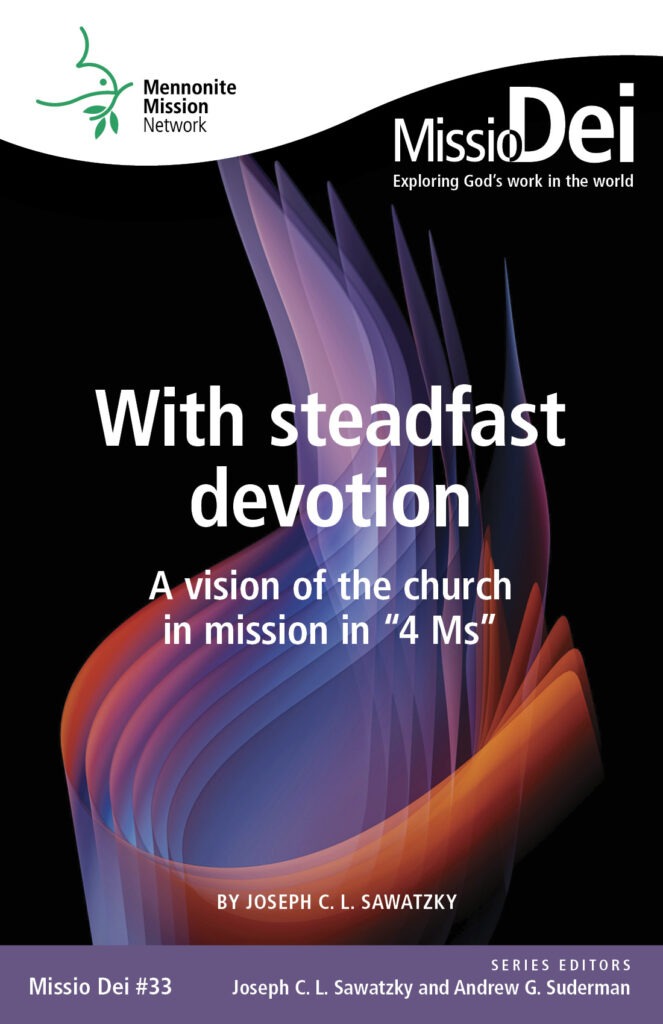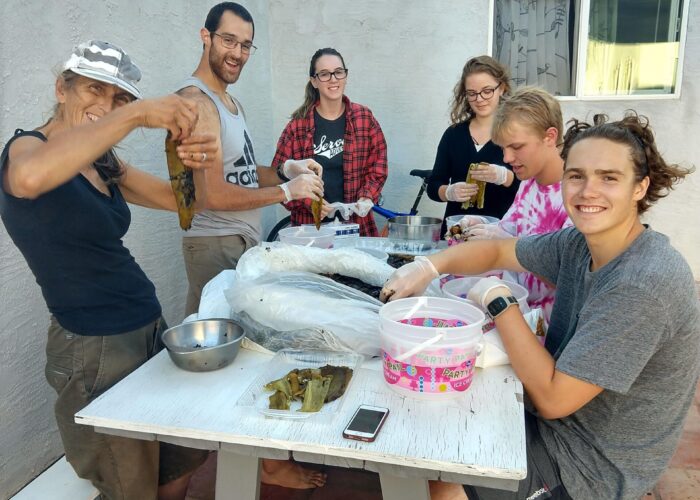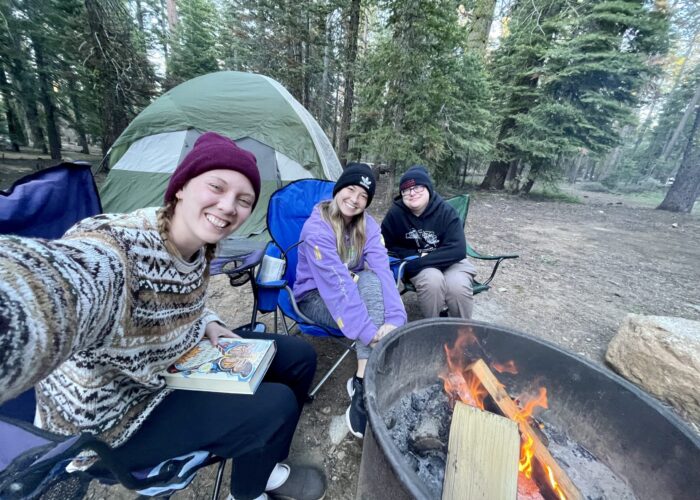The 33rd publication in the Missio Dei series, With steadfast devotion: A vision of the church in mission in ‘4 Ms,’ was written by Joseph C. L. Sawatzky, Ph.D., Mennonite Mission Network training and resources facilitator and Anabaptist Mennonite Biblical Seminary Global Leadership Collaborative project specialist.
The early church’s origins, detailed in Acts 11:19-30, are told through the story of the Antioch church. This church was multiethnic, multiplying, maturing and practiced mutuality. These traits exemplify a church body that is fully engaged in God’s mission. Missio Dei #33 explores this passage.
In the video Bible study series by the same name, Sawatzky narrates his exploration of these “4 Ms,” which he believes have great relevance for the modern church. This study guide is a companion to the video series.
Video 1: Multiethnic
- The video refers to the beginning of the community in Antioch as “the origin story of the church.” What is the basis for this claim?
- What is the meaning of the term “multiethnic”?
- Why is it significant that the disciples of Jesus were first called “Christians” in Antioch?
- The video says that the “gathering of the nations” in Antioch took place “in the context of crisis.” In an article from 2020 (MennoniteMission.net/blog/we-became-friends/), Siaka Traoré, a Mennonite leader from the West African nation of Burkina Faso, noted that “the Chinese word for conflict, Wei Ji, is a composite made up of ‘danger’ and ‘opportunity.’” How did “danger” become “opportunity” in the story of Acts 11:19-30? What crises do we face today, and how might these be opportunities for followers of Jesus?
- What did it take for Jews and Gentiles to become one community in Antioch?
- Missiologist Titus Presler defines Christian mission as “ministry in the dimension of difference.” Where do you see Christians reaching across lines of difference today? Have these instances of crossing barriers led to faith in Jesus Christ?
- The text speaks about “those who were scattered” and those to whom they spoke — “the Hellenists” (see vv. 19-20). Who are “the scattered” today? Who is in the position of receiving those who are scattered today?
- The believers who were scattered from Jerusalem announced that “Jesus is Lord” (see v. 20). In the nation where you live, or in nations where you have lived, what are some of the “lords and gods” that people serve? In these settings, how might the message of Jesus be good news?
- Christian identity is multiethnic. What is your response to this statement? What connotations does “Christian” carry in your context?
Video 2: Multiplying
- What reason does the text give for why “a great number [of Gentiles] became believers and turned to the Lord” (v. 21, NRSV)?
- Verse 24 states that “a great many people were brought to the Lord” (NRSV). What factors led to this “second phase of numerical growth”?
- The text describes Barnabas as “a good man, full of the Holy Spirit and of faith” (v. 24, NRSV). How does Barnabas exercise faith in this story? How is faith shown through the actions of those “men of Cyprus and Cyrene” (v. 20)? What does it mean to have faith, and why does it seem that faith leads to growth?
- What is your reaction to phrases like “numerical growth” or “church growth”? Do you see growth as an intentional effort of the church or a by-product of the church’s faithfulness to the way of Jesus — or a combination of these?
- If multiplication is the work of the Holy Spirit, what is needed for disciples of Jesus to become channels of God’s presence to others today?
Video 3: Maturing
- Verses 24 and 26 refer to believers in Antioch by the same phrase, “a great many people.” Why is this significant?
- In Video 1, we saw that the term “Christian” was first coined in a multiethnic environment. What layer of meaning does Video 3 add to the meaning of “Christian”?
- What verbs describe the process of “making disciples” in Matthew 28:19-20?
- Jesus taught that loving God and loving one’s neighbor is the greatest commandment (Matthew 22:34-40). Jesus’ command to his disciples to “make disciples of all nations” is known as “the Great Commission” (Matthew 28:16-20). When you think of the greatest commandment, does the Great Commission come to mind? When you think of the Great Commission, does the greatest commandment come to mind? Discuss the reasons why this may be. What might it mean for the church to see the greatest commandment in the Great Commission, and the Great Commission in the greatest commandment?
Video 4: Mutuality
- How did Barnabas set an example for the church in Antioch?
- How would you describe the relationship between Barnabas and Saul in this text?
- Where have you seen examples of effective partnership in leading the church? Have you seen models of healthy collaboration outside of the church? What could the church learn from these examples? What is needed for people to work well together?
Video 5: Spiritual gifts (mutuality continued)
- What does the term “apostle” mean?
- How does the video describe the relationship between the churches in Jerusalem and Antioch?
- How did the church in Antioch became a sending church? Why is it significant that Antioch became a missional — or sending — church? What is significant about the types of sending that the Antioch church was involved in? What can the church today learn from these examples?
- Where do we see prophets in this story, and what were their roles in the mission of God?
- How does the depiction of prophets in this text fit your understanding of prophecy? How does it stretch your understanding of prophecy?
- The word “evangelist” — and “evangelism” — is derived from a Greek word meaning “good message” or “good news” — also “gospel” or “evangel.” What made the men of Cyprus and Cyrene particularly good messengers? What lessons can we learn from them about announcing the good news today?
- The text says that Barnabas “rejoiced” when he “saw the grace of God” among the believers in Antioch (v. 23, NRSV). Can you think of a time when someone recognized the gifts of God in you? What impact did that have on your life?
- “Advocate” (Greek: paraklētos, paracletos) is a term used by Jesus to describe the Holy Spirit (John 14:16-17). The verb form is used when Barnabas “encouraged” or “exhorted” the church. How was Barnabas an “advocate”? Whom did he advocate for? What did he advocate for?
- Paraclete means “to call to the side of.” So Barnabas was someone who was called to the side of, or called to be with, others. Does this fit your understanding of what it means to be a pastor?
- What made Barnabas a good pastor? What reasons does the text give for his actions?
- Why did Barnabas go to Tarsus to look for Saul? What was his purpose in bringing Saul to Antioch?
- The text says that Barnabas and Saul “taught a great many people” in Antioch (v. 26, NRSV). Where else in Acts do we see examples of the church as a learning community or a group of believers committed to the teachings of Jesus? What can we learn from these examples?
- “One plants, another waters, but God gives the growth” (1 Corinthians 3:6, paraphrased). How are these words of Paul illustrated in the story of Acts 11:19-30? What difference does believing that “God gives the growth” make in the life of the church? What would a church that believes this look like? What difference might this make for how the church does mission?





